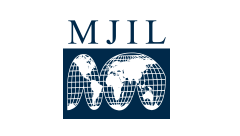Abstract
Nuclear weapons pose an increased international threat to security in the modem era. Cheap transportation and the opening of national borders for trade have made it easy for nuclear materials to cross national boundaries. Informal networks have sprouted up, facilitating the proliferation and exchange of nuclear materials and the technology required to turn those materials into weapons. Advances in technology have made it easier to enrich uranium, instilling concerns of increased nuclear weapons proliferation. These changes in technology, the development of informal nuclear networks, and lax security in safeguarding weapons by states such as Russia and Pakistan have fueled global fears that more states and even terrorist organizations could build nuclear weapons. Unfortunately, the international community has not developed a regulatory regime capable of handling modern nuclear threats. The several bodies of international law that do currently regulate nuclear weapons oscillate between promoting the goals of nonproliferation and disarmament. The Nuclear Non-Proliferation Treaty (NPT) is the centerpiece of the international regulatory regime and focuses heavily on nonproliferation, but also purports to work towards the nonbinding goal of disarmament. The NPT, however, has failed to prevent the spread of nuclear weapons and has not adequately promoted disarmament. The treaty was adopted during the Cold War and addresses Cold War fears of proliferation by states outside the United States' and Soviet Union's nuclear umbrellas. It codifies a nuclear monopoly that has lost legitimacy over time, does not address current regional hotspots, and is silent about the threat of terrorism. The United Nations Security Council has passed several resolutions responding to direct nuclear threats from specific actors but has never attempted to provide a framework for the global regulation of nuclear weapons. Security Council Resolution 1887 on nuclear nonproliferation and nuclear disarmament represents a potential shift in emphasis for the regulation of nuclear weapons in the post-Cold War era. Unlike the NPT, this resolution emphasizes disarmament as its primary mission, though it also continues to reaffirm the principle of nonproliferation. The Security Council's unanimous adoption of Resolution 1887 indicates a willingness by international leaders to fully eliminate global nuclear stockpiles. It also recognizes that disarmament will limit regional proliferation fears and diminish the threat from terrorists. Resolution 1887, however, has several problems. It tries to salvage the framework of the NPT when it could have served better as a starting point for a new international regime. The resolution also should call for a stronger enforcement mechanism-specifically targeted, automatic sanctions. To address these problems, Resolution 1887 needs some amendment in its scope to effectively address the threat of nuclear weapons. This Note analyzes the successes and shortcomings of Resolution 1887.
Recommended Citation
Usman Ahmed & Raghav Thapar,
Security Council Resolution 1887 and the Quest for Nuclear Disarmament,
33
Mich. J. Int'l L.
587
(2012).
Available at:
https://repository.law.umich.edu/mjil/vol33/iss3/4

